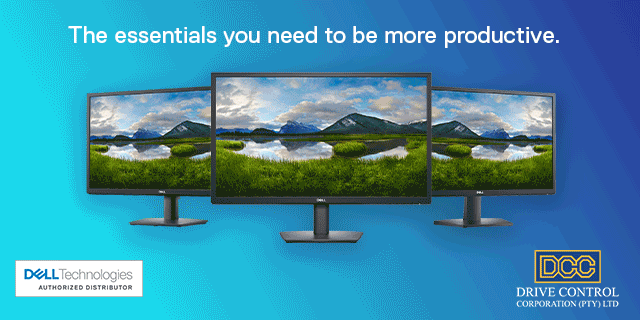What will 1700 satellites per year mean for Africa?
By Industry Contributor 15 July 2022 | Categories: news (1).jpg)
NEWS SPONSORED BY DELL E-SERIES 24" MONITORS FROM DCC:
By Dr Dawie de Wet, Group CEO of Q-KON Africa and Chief Engineer for Twoobii
The Euroconsult satellite market forecast, individually assessed around 170 constellation projects of which 110 originated from commercial companies. While OneWeb, Starlink, Gwo Wang, Kuiper and Lightspeed will collectively account for some 58% of the anticipated 17,000 satellites to be launched, these leading firms will only contribute approximately 10% of the total satellite manufacturing and launch revenues of the space industry. According to the report, two key reasons combine to explain this disparity. The first is the economies of scale inherent in satellite manufacturing, and the second is a marked decrease in launch prices.
In terms of revenue, it is interesting to note that governments will still represent the largest share of revenues over the next decade (an estimated $240 billion); this despite the new business models being developed by commercial players entering the space industry. Likewise, incumbent satellite manufacturers will likely continue to dominate the market, with just four of them having captured half of the market over the past decade, to the value of $87 billion.
In their follow-up annual Space Economy Report released in January 2022, Euroconsult estimated that the global space economy in 2021 totalled some $370 billion. This figure includes commercial space revenues and government procurement of $337 billion, in addition to $40 billion from governments for internal costs and R&D.
Opportunities for Africa
Adding 200Tbps of Capacity
According to GMSA, by the end of 2022, 495 million people will be subscribed to mobile services in sub-Saharan Africa – some 46% of the region’s population. As of 2020, Statista reported that 620 million people lived within 25km range of a fibre optic network node. While successful mobile and fibre network deployments are a positive development, it is possible that the audiences served by these two technologies largely overlap, meaning that any further growth will remain subject to proven business case feasibility in the case of less densely populated areas (typically both rural and remote).
It is expected that the New Space satellite constellations will add a total of 200Tbps capacity to the sub-Saharan African market. To put this in context, the Seacom undersea cable was designed for 12Tbps and is currently provisioned at 500Gbps, so satellites have the potential to add the equivalent of 16 additional Seacom cables. Adding to this are the fundamental benefits of satellite services, including the fact that they are immediately available, anywhere and everywhere. This means that Africa could soon experience a capacity burst in the market, and all the advantages that will flow from that.
No-limit Connectivity
The development of LEO constellations such as Starlink and OneWeb, and MEO constellations such as SES mPower, will introduce a new range of satellite services to Africa and further exorcise the old myths about slow, expensive satellite services beset by latency issues.
For example, Starlink is promoting service rates of 50 – 150Mbps, with latency of just 15-100msec at monthly charges of $100, which appear to be more targeted towards professional users rather than the general consumer market. OneWeb is clearly more of a B2B offering with latency of just 70msec and data rates of 300Mbps. Completing the current range of offerings, mPower MEO service will provide very high capacity 400Mbps point-to-point links at 150msec latency, making a viable alternative to fibre connectivity.
The powerful potential and inherent capabilities of the LEO, MEO and next generation GEO satellite services can be expected to be leveraged by specialist service providers as Q-KON Africa to build network solutions aimed at connecting Africa’s remaining market segments.
Smart Network Architectures
New Space services will also be harnessed in service of global industry trends such as Cloud Computing and Internet-of-Things (IoT) development. This has already been demonstrated by the Microsoft Azure Orbital product and the Amazon Web Service Ground Station which are both intended to service, support and enable the large network space constellations.
These developments will be a follow-up to services such as Twoobii, the Smart Satellite Service engineered and operated by Q-KON Africa. Smart Satellite Services support applications such as SD-WAN, video surveillance and IP layer 2-over-satellite architecture are also expected to see significant growth.
These developments will facilitate the seamless integration of new satellite services with existing terrestrial networks and enable the network expansion throughout Africa.
Conclusion
The planned 400% increase in satellite launch activities over the next decade will transform the global telecoms industry by adding 200Tbps capacity to overall network fabrics. While the majority of services and developments are focused on Government applications, Africa certainly stands to benefit from this expansion.
The growth in available capacity, plus the flexibility and rapid deployment benefits of satellite, have the potential to drive an accelerated deployment of communication services to all.
Most Read Articles

Have Your Say
What new tech or developments are you most anticipating this year?




